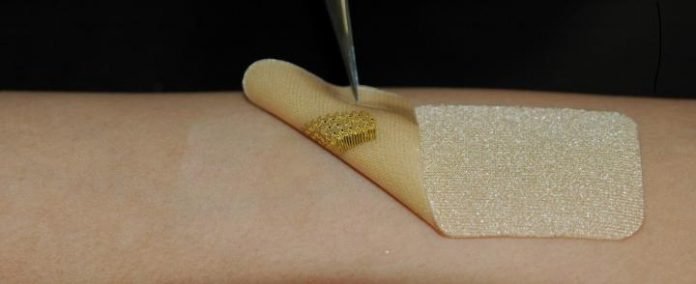
In a new study, researchers have developed wearable sensors that mimic skin to help wounds heal.
The new finding could help develop a better wound healing treatment.
The study was done by researchers at Binghamton University and the State University of New York.
Biosensors are devices that combine a biological component with a physiochemical detector to analyze data.
Current biosensors in the medical field still have limitations to overcome and need to be improved.
In the current study, the researchers developed skin-inspired electronics that can monitor lactate and oxygen on the skin.
The new sensors allow long-term, high-performance and real-time wound monitoring in people.
The new biosensors are structured similarly to that of the skin’s microarchitecture.
They are equipped with gold sensor cables that can show similar mechanics to that of real skin.
According to the team, this structure allows free mass transfer between biological tissue and bio-interfaced electronics.
The team hopes the new sensors can help improve healthcare applications and provide useful information in disease progression, wound care and more.
In their future work, they will create a new version of the sensor that can meld seamlessly with the wearer’s body.
Such a sensor can effectively analyze chemical and physiological information.
The team also wants to utilize sensor design to incorporate more biomarkers and create even more multifunctional sensors to help with wound healing.
If the sensors can be incorporated into internal organs, it will help scientists understand the diseases that affect these organs and the human body.
One study author is Matthew Brown, a Ph.D. student at Binghamton University.
The study is published in the journal Biosensors and Bioelectronics.
Copyright © 2019 Knowridge Science Report. All rights reserved.



